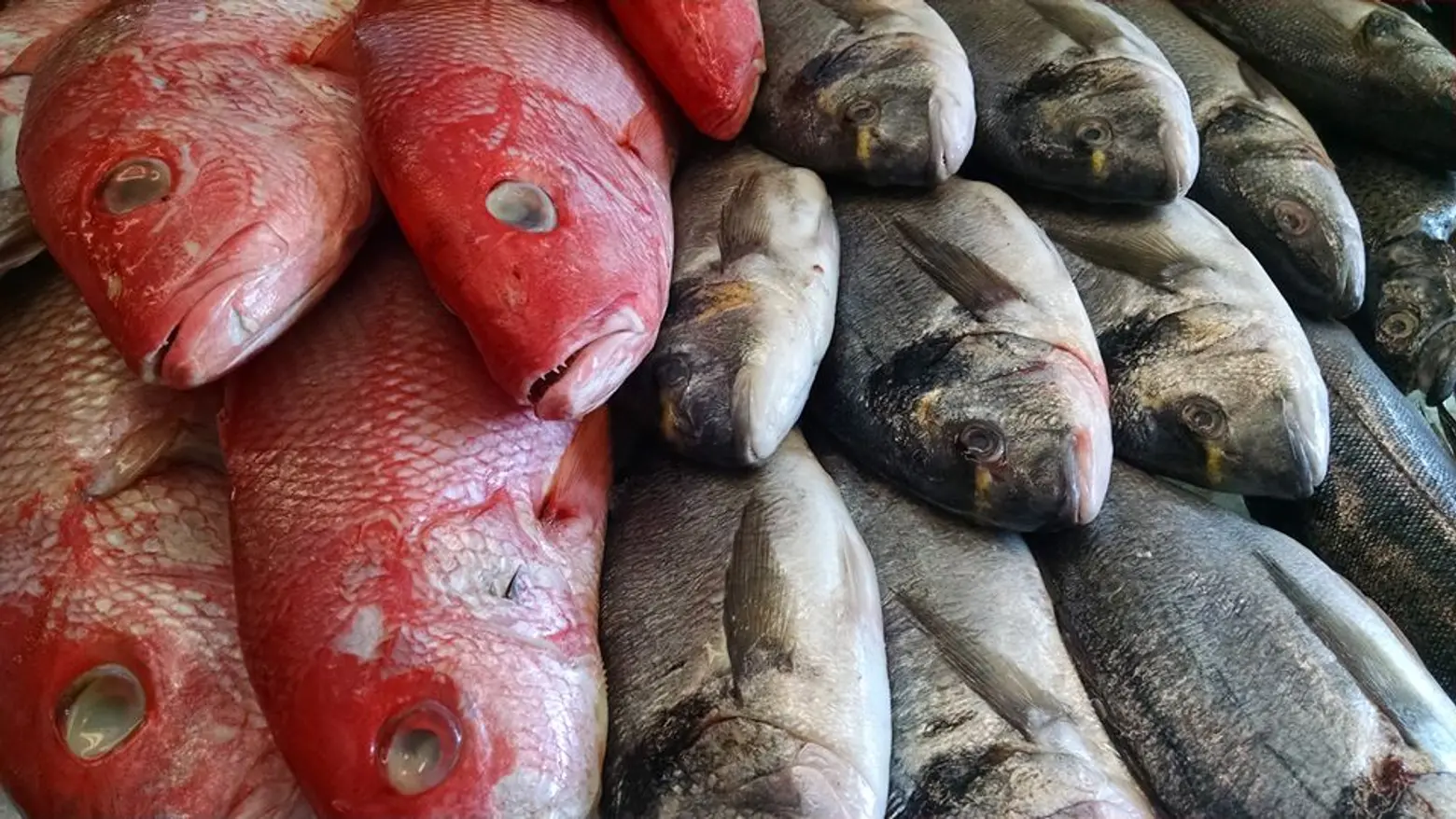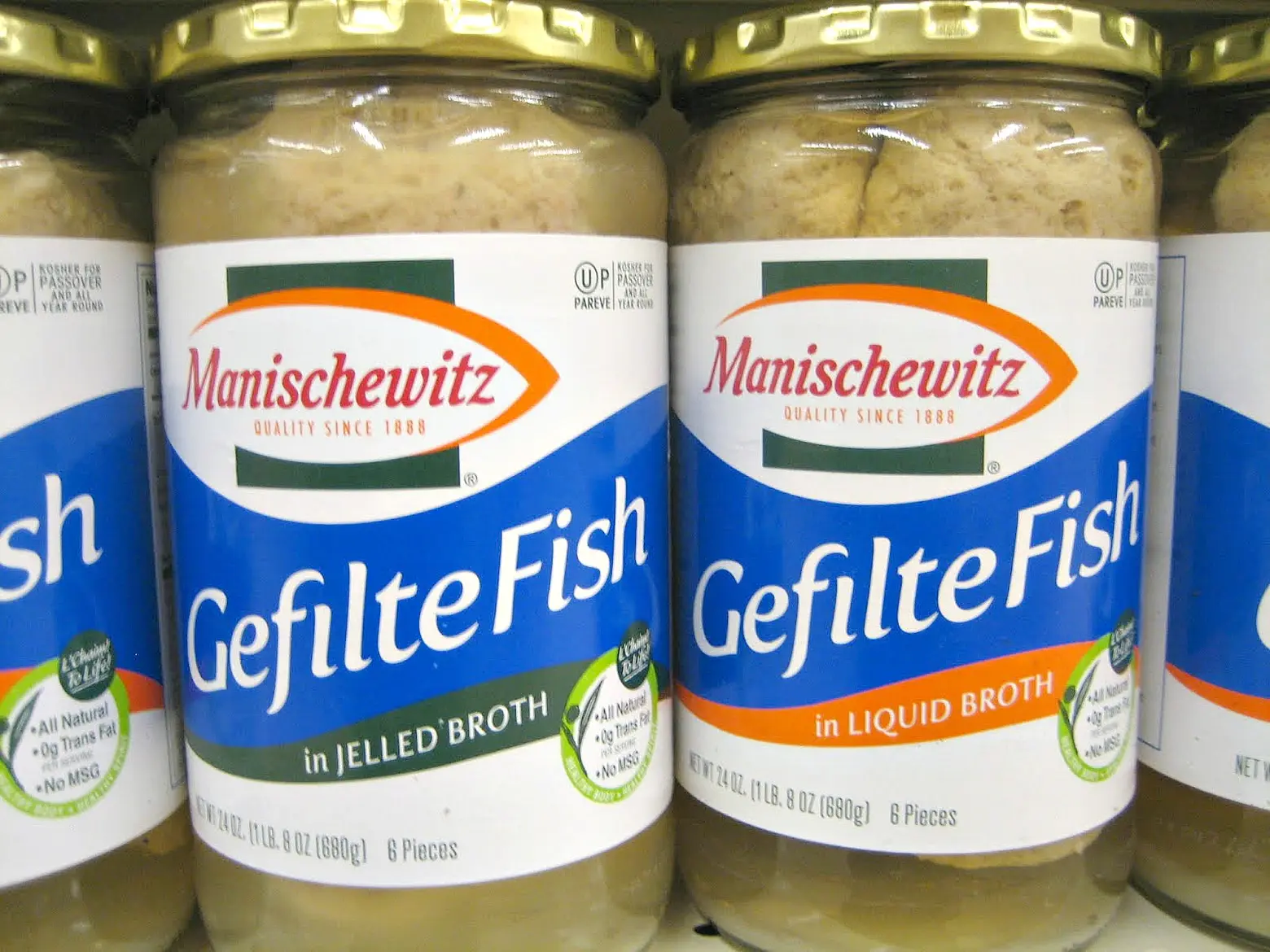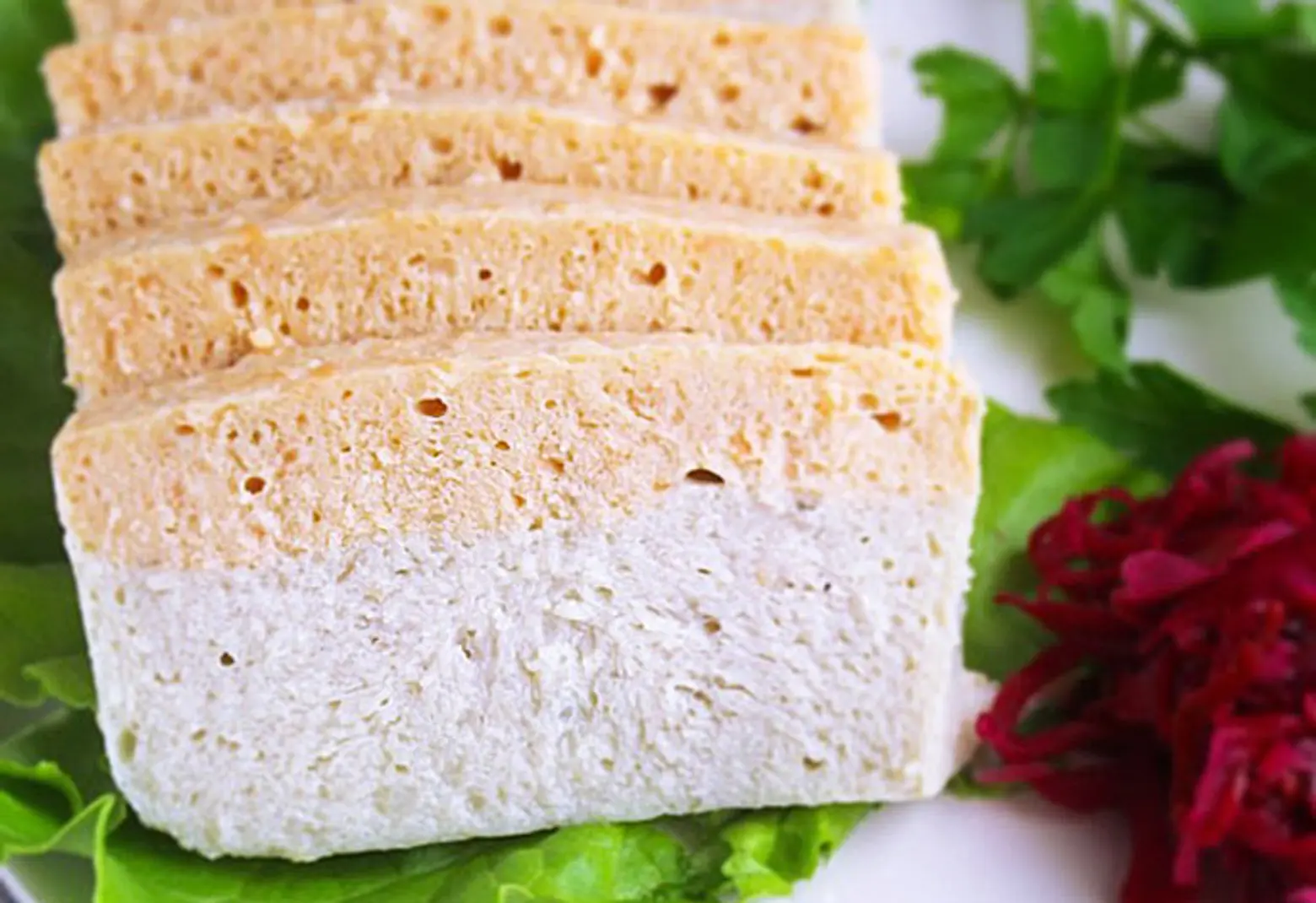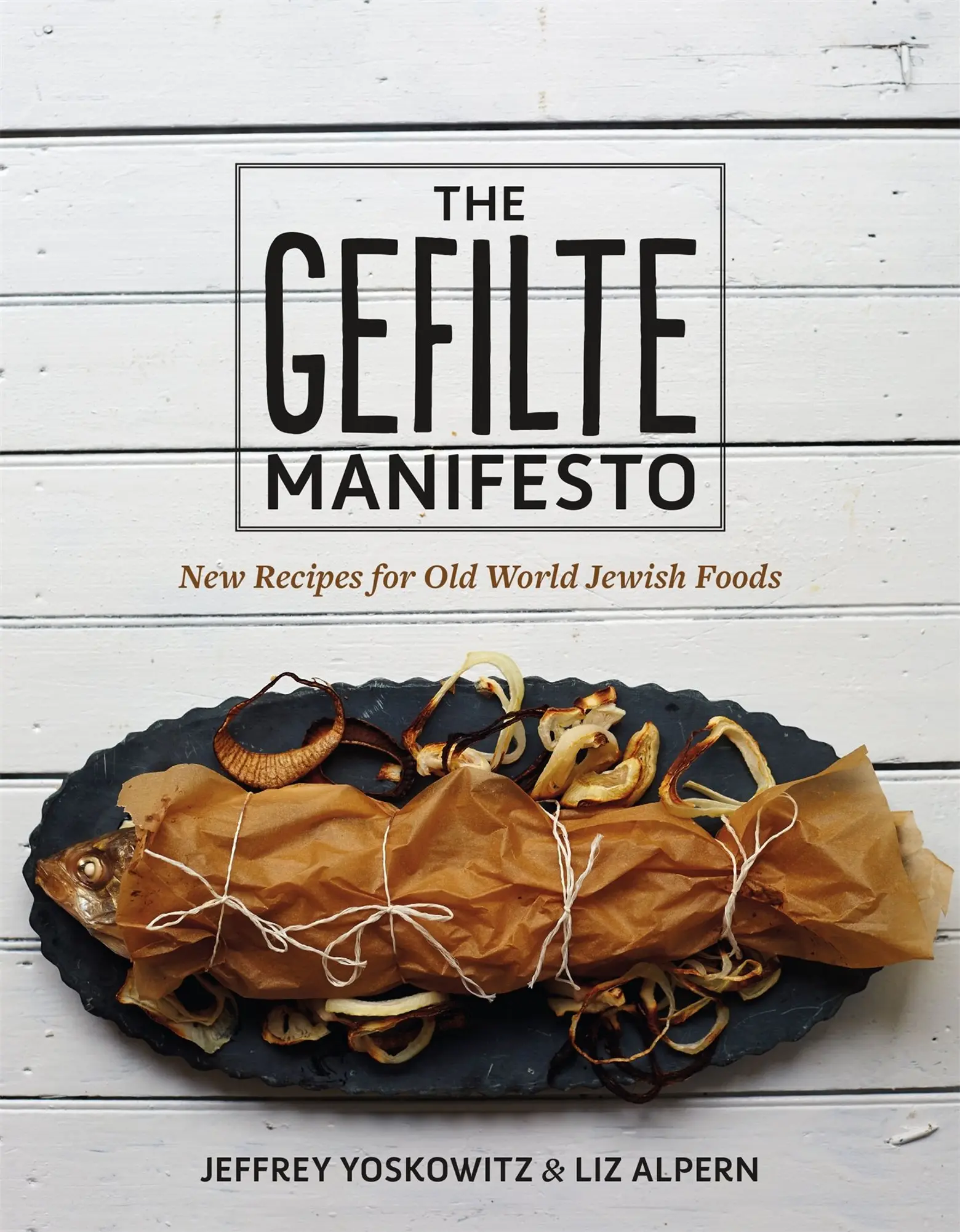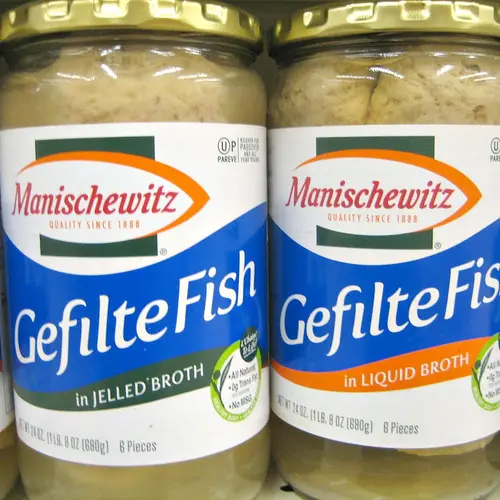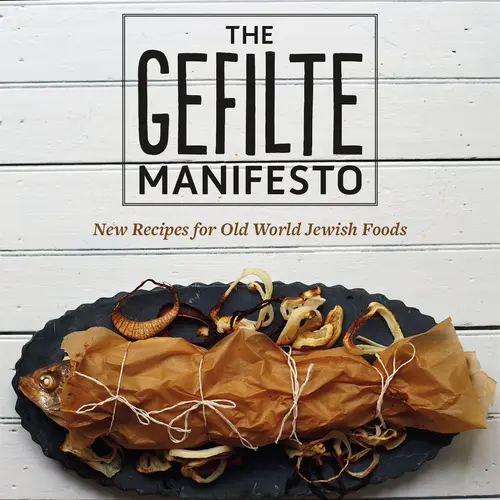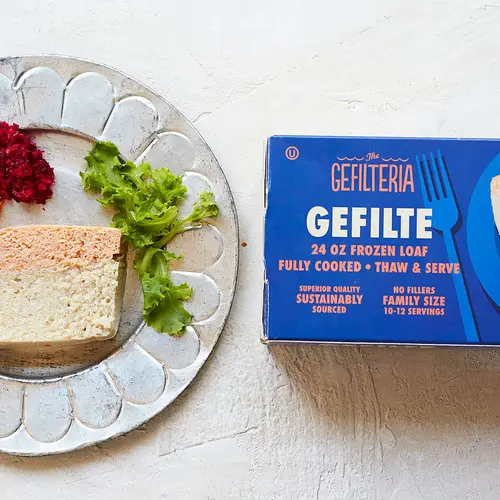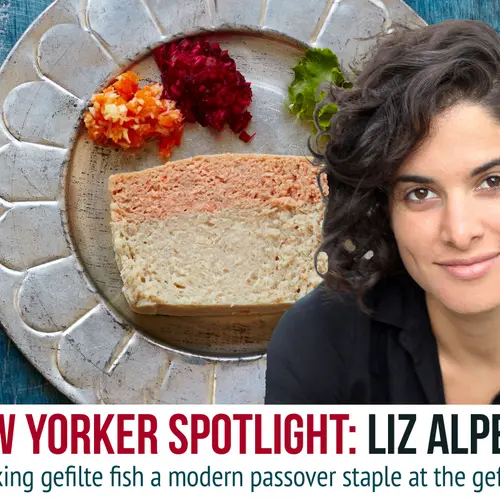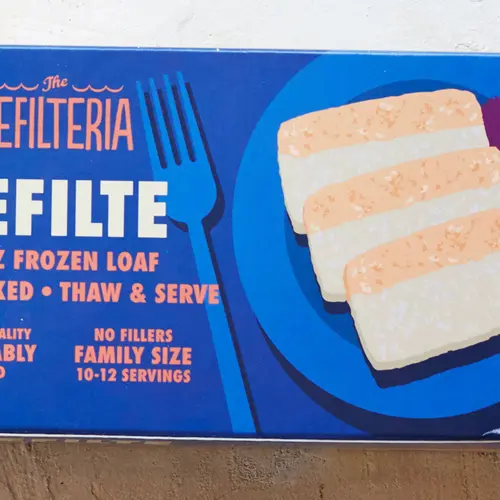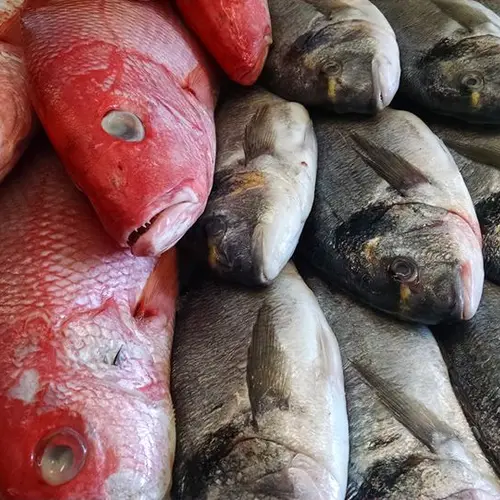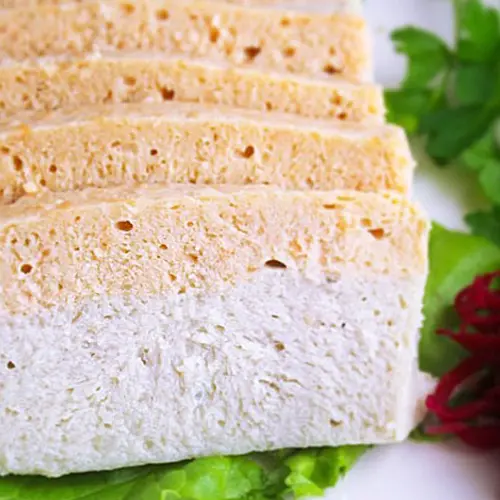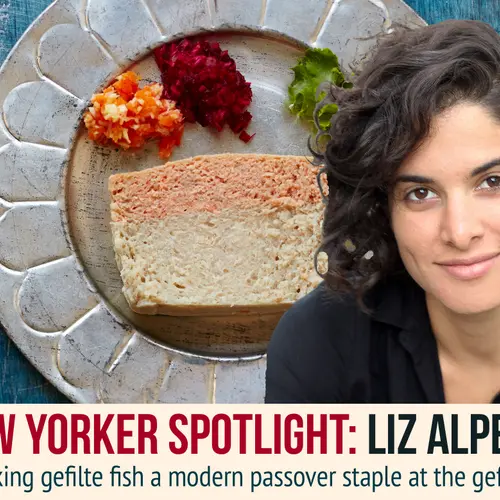Spotlight: The Gefilteria’s Liz Alpern Is Making Gefilte Fish a Modern Passover Staple
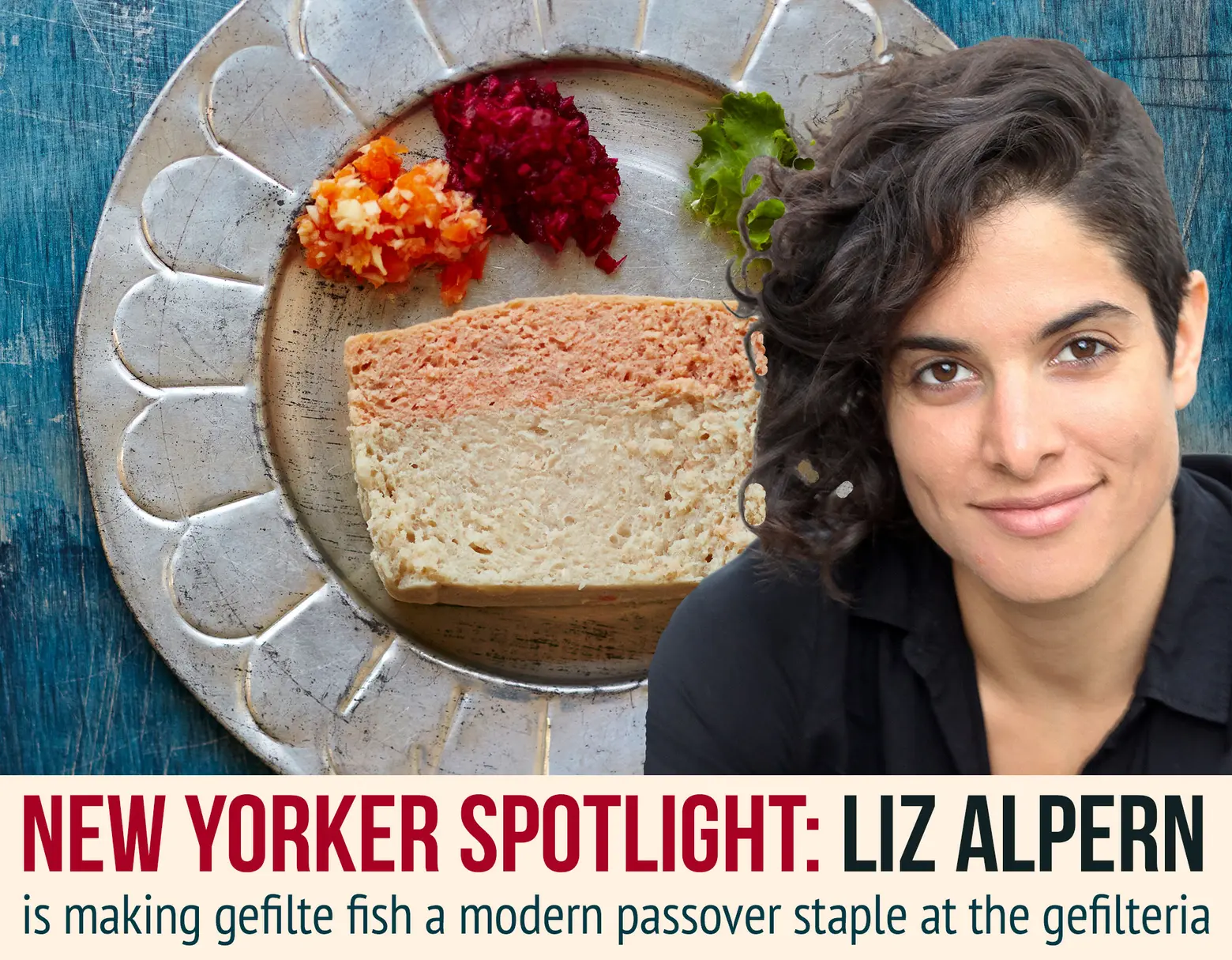
As the co-founder and co-owner of The Gefilteria, a Brooklyn-based gefilte fish manufacturing business, Liz Alpern is hard at work making sure there’s plenty of her product for her customers to serve at their Passover seders in just a week.
Gefilte fish is a dish surrounded by lots of opinions; at seders, it’s just as common for someone to ask for seconds as it is for others to kindly offer the dish to their neighbor. Liz understands this range of feelings, as she’s found herself on both sides of it. When she was younger, she didn’t partake in the course, but in adulthood, she was introduced to homemade gefilte fish– instead of the pre-made variety found on store shelves–and a love affair began that developed into The Gefilteria, which she co-founded with Jeffrey Yoskowitz in 2012.
6sqft recently spoke with Liz to discuss the founding and evolution of The Gefilteria, how they’re casting the Passover staple in a new light, and what it means to be part of her customers’ seders.
For someone unfamiliar with gefilte fish, how would you explain it?
It’s a traditional Jewish fish dish that starts off many, many Eastern European Jewish holiday meals. It’s an appetizer that’s served cold, and it’s made of multiple types of ground fish, onions, spices, and eggs. We like to compare our gelfite fish to a fish pate or a fish terrine. We actually bake ours, but it’s often poached in balls, and it’s served with horseradish relish.
It’s a food that’s been made for many centuries in one form or another, and it’s the symbol for how far a fish can go to feed a family. Gefilte means stuffed in Yiddish, and originally you would get a fish, take out the insides, mix it with spices, herbs, onions, eggs and breadcrumbs, and then stuff it back into the skin of the fish. That’s where gefilte fish started. The idea was if you only have one fish, how can you stretch that to feed more people? How can you enhance that one small fish and make it go further?
There are a lot of robust opinions about gefilte fish. Why do you think people have such strong feelings about it?
I think the answer is pretty simple. What I’ve found in my life – selling gefilte fish and being engaged with it for many years – people either love it or hate it. The people who love it tend to have someone in their family who made it from scratch, and the people who hate it got only the jarred version.
What Eastern European Jews immigrated to the US, many would get a live fish and keep it swimming around in the bathtub in their tenements on the Lower East Side. People would go to great lengths to make gefilte fish, but over time as the processed food industry developed, a lot of people reverted to the kind that was in a jar. Clearly there was a market for it, and the easy jarred gefilte fish came into fashion. For a lot of people, all they can think about is the jar with gel in it. Who wants to eat fish in a jar? Though I can tell you there is a camp of people who absolutely love it, and I respect it.
What are some of your first memories of gefilte fish?
I did not eat gefilte fish as a kid because it came from a jar. No one ever forced me to eat it, but it was always the course that I skipped at Passover and the Jewish holidays. Much later on, I worked for Joan Nathan, who’s a Jewish cookbook author, and she actually made gefilte fish by hand every year. I finally saw the process and read a lot about it and tasted it; it was absolutely delicious. As I got older, I got more and more interested in it and at a certain point I turned a corner and said, “This is awesome.” Once I made it from scratch it became a food that’s pretty dear to me.
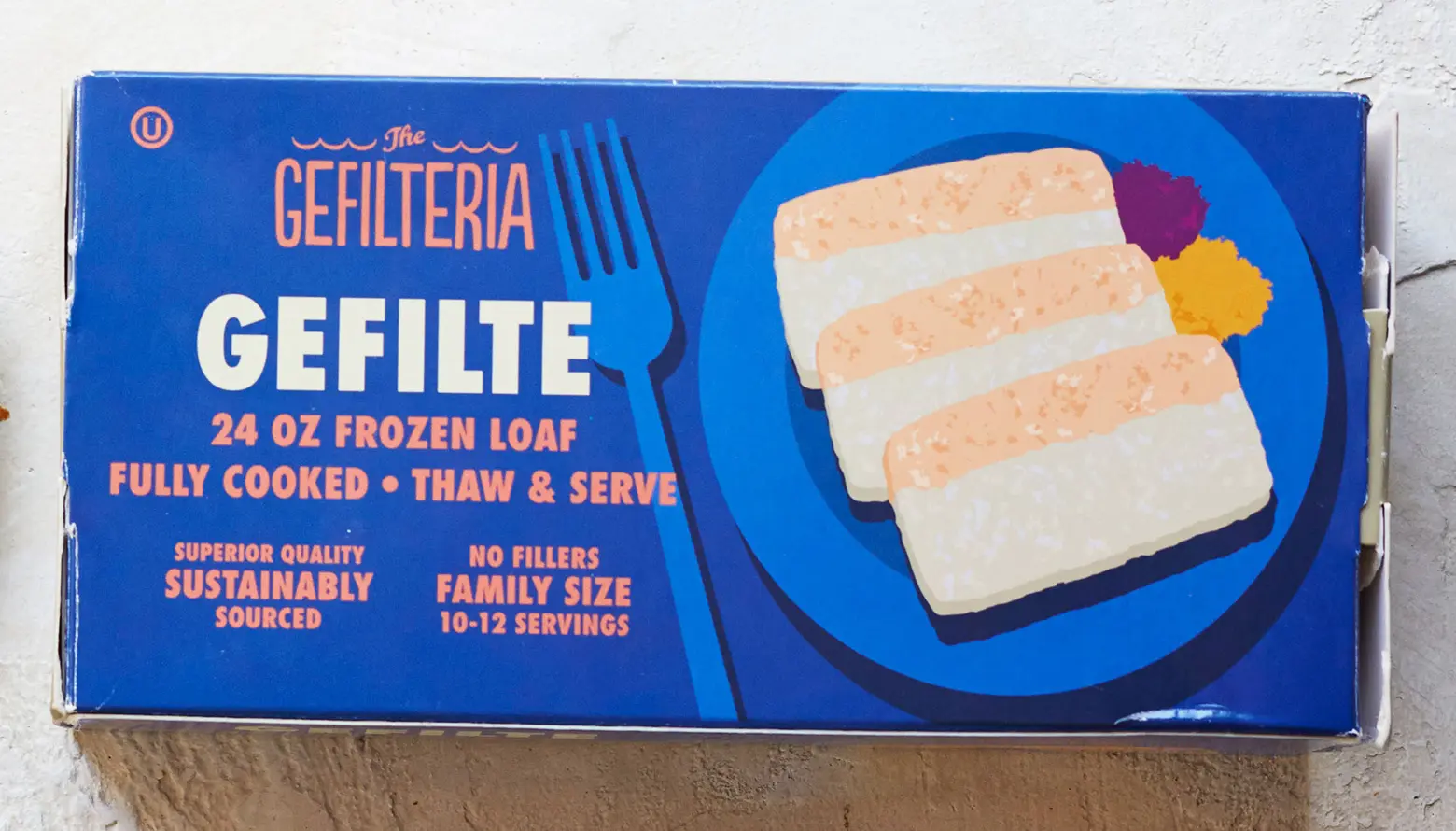 Image courtesty of Lauren Volo
Image courtesty of Lauren Volo
Did this new found appreciation inspire you to found The Gefilteria?
Jeff, my business partner, and I both share a really deep love and passion for Eastern European, Ashkenazi Jewish food. And we saw a lot of other people our age really disparaging it and saying how boring it was. So for us, the business was the outgrowth of our mission to revitalize this food, show people how exciting it can be, and give them exposure to dishes they’ve never had or never had made well before. The gefilte fish was just one piece of it, but you can imagine it was a pretty compelling item.
We spent about a year just cooking. It was pretty intensive and when we first started, we didn’t necessarily think it could be a business. We wanted to get a better handle on what was wrong with gefilte fish the way people were doing it, which grew into something like, “Hey, there’s an opportunity here,” and we said, “Let’s do it.”
How much labor is involved in making gefilte fish?
It’s really not that much labor because we live in a world where people have food processors or grinders. If you want to make gefilte fish and you’ve never done it before, all you have to do is go to your local fish store. If you have access to a Jewish fish shop, which in New York there are plenty, they’ll actually grind the fish for you. You can just get a bag of fish that’s all ground up, and even sometimes they’ll put onions in it, and then all you have to do is add some egg, matzo meal, if you want to, and spices.
The other piece is you’re going to pouch it in a broth, which is the way most American Jews have it. You do want to make a fish broth, which can be a bit laborious because, ideally, you’re going to let that broth cook for a couple hours and you’re going to have your fishmonger give you heads, tails and bones to put in it. Some folks make a vegetable broth. We actually bake our gefilte fish in a loaf, and we really love that it cuts out an entire step.
How do you like to eat your gefilte fish?
For me, really the only way I like it is with our carrot citrus horseradish that we developed – it’s tart, citrus, really bright, lightens up the fish, and compliments the flavors so well with a little bit of a kick.
In addition to customers who buy it for Passover, do you have a clientele that just buys gelfilte fish because they really enjoy it?
We tried to figure that out. The answer is yes, but I couldn’t tell you exactly how big that number is. We have found that kids really like our product, so the parent ends up buying a bunch of loaves because the kid loves it and it’s high in protein. Certainly we know of people who have dinner parties and bring it as an appetizer. There’s definitely a market.
How has The Gefilteria grown over the past few years?
The Gefilteria started as a small, experiment of, “Hey, let’s see if people want boutique, handmade gefilte fish.” What it turned into was a legitimate manufacturer of kosher-certified, nationally available gefilte fish. Rather than just making products, we found that we were being invited to participate in all sorts of live events. And because we were doing so much research and learning, we were also getting requests to speak and lead workshops and teach about Eastern European Jewish food. All of that has led to the point that we now have a cookbook coming out [The Gefilte Manifesto] in the fall, which is a really powerful way to transmit some of what we’ve been doing to people everywhere.
What does it mean to know your product plays an important role in celebrating Passover?
Even though some of what we’re doing and the challenges have changed, our mission has always been the same. So when I know there’s thousands of people on the first and second nights of Passover who are eating the gefilte fish and having an enhanced experience of Ashkenazi food because of it, that’s the most exciting moment. I’ve been doing this for a while now, and it does not get old.
+++
To find a store or online retailer that carries The Gefilteria’s gefilte fish, click here.
[This interview has been edited]
RELATED:
- See the Last Days of Streit’s Matzo Factory Through Somber Black-and-White Photos
- New Yorker Spotlight: Maya Jankelowitz of Jack’s Wife Freda on Creating Restaurants That Feel Like Home
- Mapping the Evolution of the Lower East Side Through a Jewish Lens, 1880-2014
Lead image: Gefilte fish courtesty of Lauren Volo; Liz Alpern courtesy of Shulie Seidler-Feller
